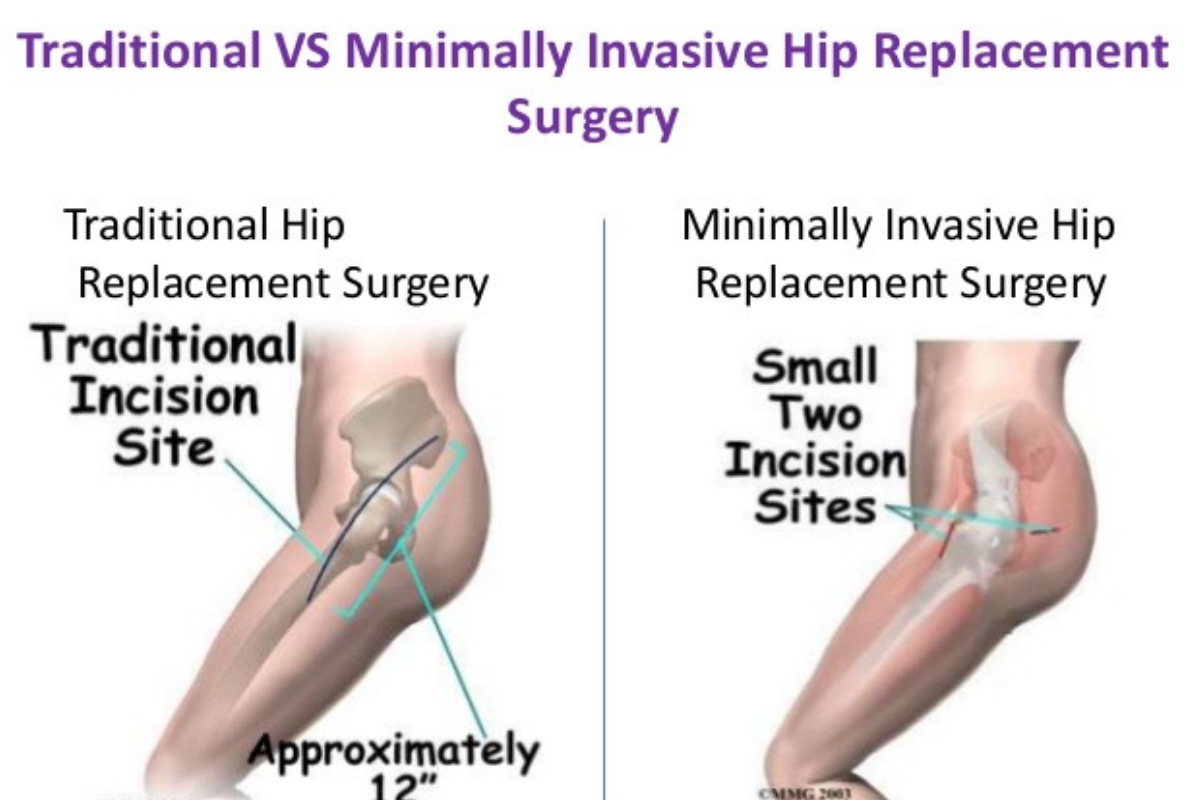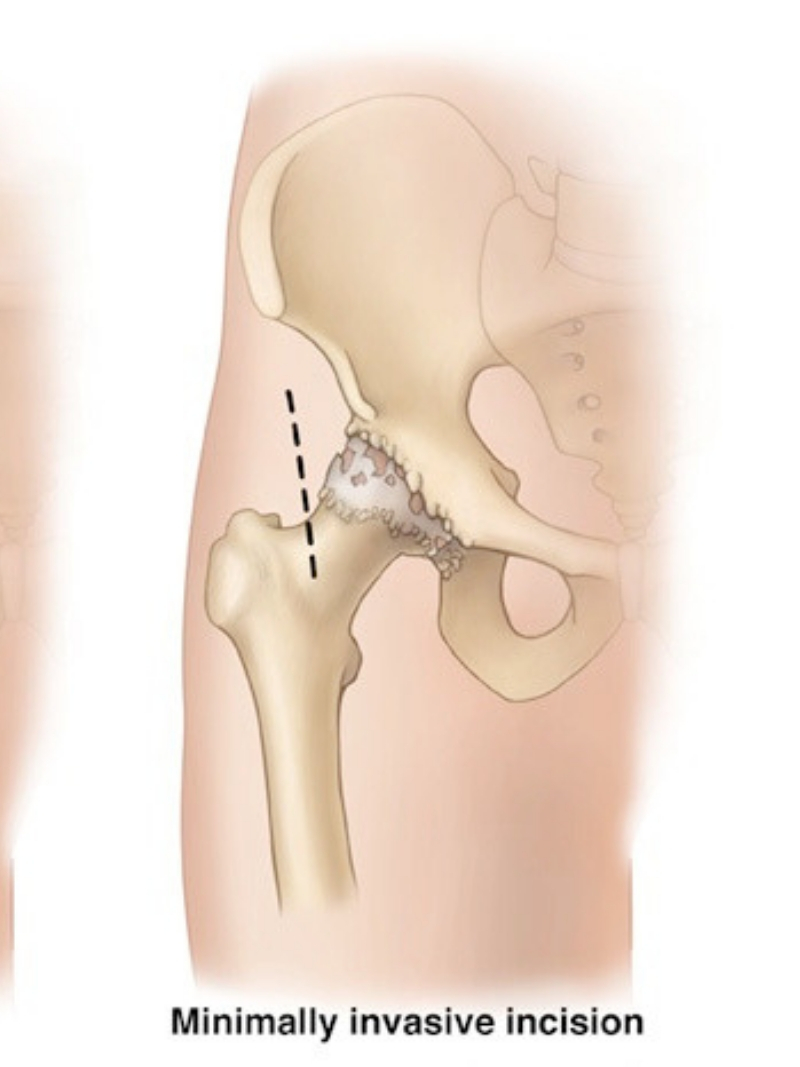Do you require any assistance? Simply reserve your appointment online below
Minimally Invasive Hip Surgery
Recover Faster, Walk Sooner
Minimally invasive total hip replacement procedure also referred to as total hip arthroplasty involves the use of modified techniques and instruments to place the same, clinically proven implants used in standard surgery, but through a much smaller incision and without cutting through the quadricep tendons and muscles.
It can be performed with either one or two small incisions. Smaller incisions allow for less tissue disturbance.

Types of Minimally Invasive Hip Surgery

Single-incision surgery is a type of minimally invasive hip replacement, the surgeon makes a single incision usually placed over the outside of the hip.
The muscles and tendons are split or detached from the hip, but to a lesser extent than in traditional hip replacement surgery. They are routinely repaired after the surgeon places the implants. This encourages healing and helps prevent dislocation of the hip.
Two-incision surgery. In this type of minimally invasive hip replacement, the surgeon makes two small incisions over the groin for placement of the socket, and another incision over the buttock for placement of the femoral stem.
To perform the two-incision procedure, the surgeon may need guidance from x-rays. It may take longer to perform the two-incision surgery than it does to perform traditional hip replacement surgery.
Hip Conditions Treated with Minimally Invasive Surgery
Though many different types of hip conditions can be treated via minimally invasive surgical techniques, not all patients are candidates.
Minimally invasive techniques are less suitable for patients who are overweight or who have already undergone other hip surgeries.
Some conditions which can be treated with minimally invasive surgery include:
Articular cartilage injury caused by arthritis
Autoimmune diseases – such as lupus where the immune system attacks the joint cartilage
Avascular necrosis – a condition where the bone dies leading to destruction of cartilage
Heterotopic ossification – Excess bone growth near or around the hip joint
Labral tears – Tears of the labrum, a piece of cartilage which lines the hip socket and tendon tears
Loose bodies – Fragments of bone or cartilage within or near the hip joint
Hip impingement – Abnormal bone growth that may cause pain or interfere with the function of the hip

Risks of Minimally Invasive Hip Surgery

Most people do very well with their minimally invasive total hip replacement. However, as with any surgery, the procedure does carry some relatively rare risks and complications such as:
- Restricted movement or stiffness of the hip joint
- Injury to the nearby nerves
- Blood clotting
- Infection in the soft tissue or bone of the hip
- Limb-length difference requiring use of a shoe lift
You are in Great Hands
Recovery after Minimally Invasive Hip Surgery
The joint replacement surgeons in Kenya at Nairobi Spine and Orthopaedic Centre were among the pioneers of this procedure as an outpatient procedure, dramatically reducing time in the hospital, pain and recovery.
You may have some pain around your incision after your procedure, but you can take medications to relieve your pain. You should be able to resume a normal diet fairly quickly.
You may have imaging, like an X-ray, to see how your surgery went. You might be able to go home within a day or two.
Your doctor will let you know when you can put weight on your leg. You may have specific instructions about limiting your movements.
You might need to use a cane, a walker, or crutches for a few days or weeks. A physical therapist can help you maintain your range of motion and strength. You should be able to resume most light activities within a couple of weeks.

